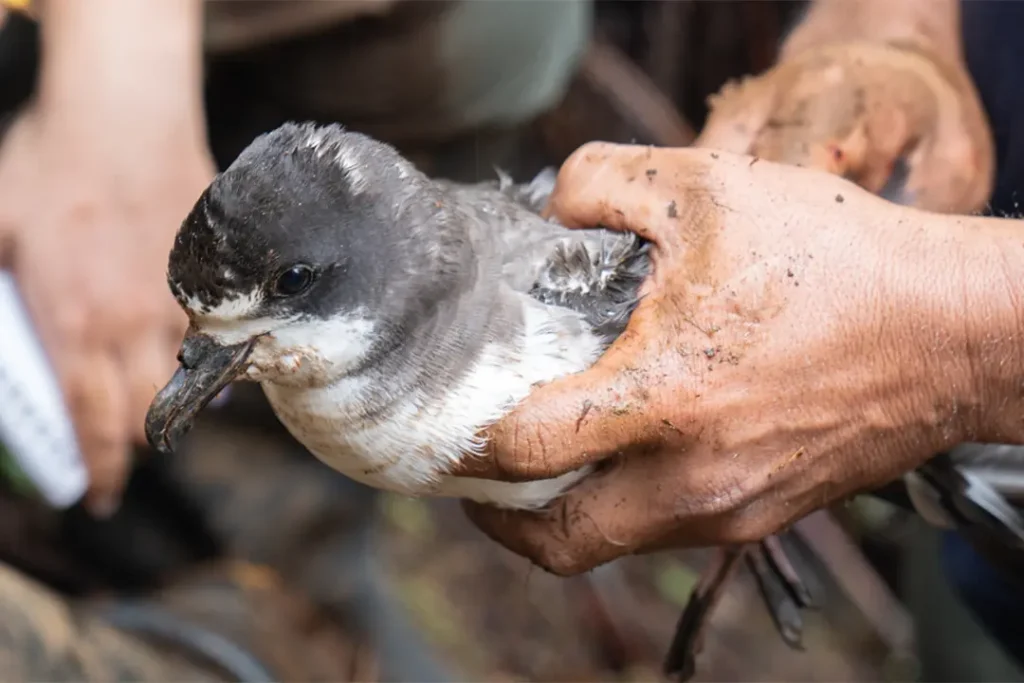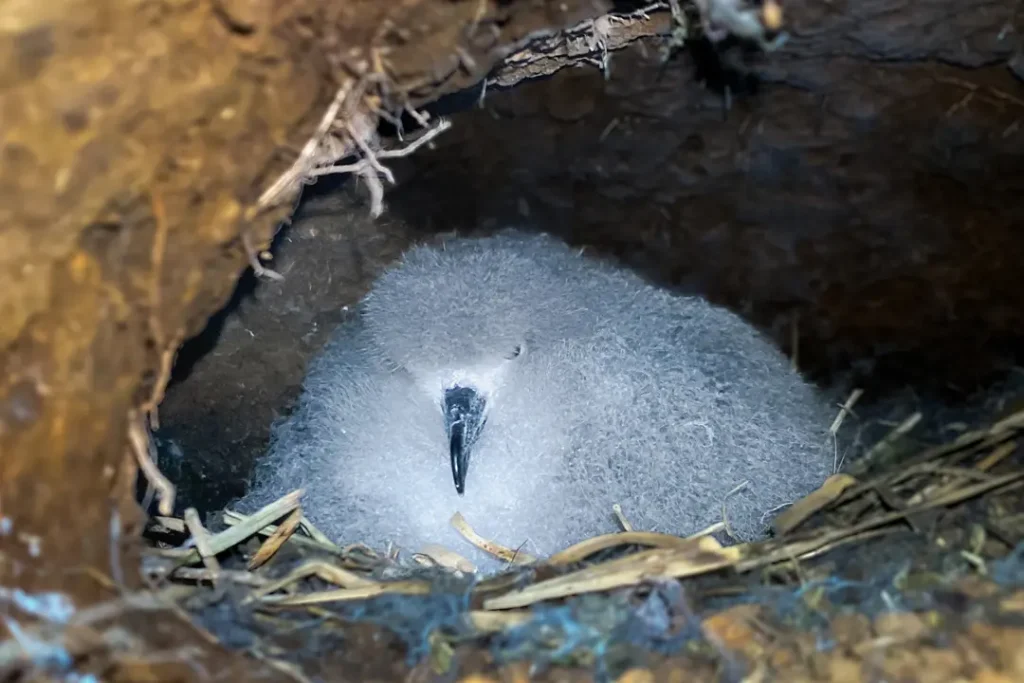Recent discoveries of Galapagos Petrel nests on Isabela Island have sparked new optimism in the conservation of this critically endangered endemic species. This is a significant step forward in the protection of one of the archipelago’s most iconic seabirds. Their breeding habitat had been under constant threat for many years.
The team, led by experts of Galapagos conservancy along with rangers of Galapagos National Park explored possible nesting sites for petrels on the flanks the Sierra Negra volcano. This included both agricultural and protected areas.
A parte de un proyecto mas grande financiado por la National Fish and Wildlife Foundation (NFWF) para mejorar los habitats de anidacion de las petrelas de Galapagos, los miembros del equipo buscaron a fondo nuevos sitios de anidacion y tambien exploraron areas donde se habian registrado previamente nidos. El equipo tambien evaluo las amenazas que enfrenta la poblacion de petrelas en la isla. Las petrelas excavan grandes y profundas madrigueras en los densos suelos volcanicos en las partes altas de las islas donde construyen nidos simples en los que ponen sus huevos y crian a sus jovenes. Generalmente estan bien protegidas en sus madrigueras, pero enfrentan amenazas de ratas que comen a los polluelos e incluso a veces a los adultos, perros que excavan los nidos y plantas exoticas que pueden ahogar las madrigueras de anidacion de los petrelas.
Active Nests and Encouragement Signs of Recovery
During their expedition, the team found 11 nests in the National Park. Three of them showed signs of recent activity, such as feathers and droppings. Petrel chicks were also confirmed in several burrows found on local farms, which previously showed signs of activity. This is a major step forward for the recovery of this species. No photographs have been taken of petrel chicks nesting on Isabela Island. This population is genetically different from the four other nesting populations in Galapagos.
Other farms within the agricultural zone also had nests, which were clearly evidence of recent occupancy. These discoveries are vital for expanding our knowledge of the distribution and condition of petrels in Isabela Island.
Domenica Pinda, the leader of the expedition and a researcher at the Galapagos Conservancy, was excited to discover chicks inside the nests. She noted that this discovery gives hope for the recovery of the species. She said that, while there is much more work to do, the results of this expedition confirm we are on track to secure the future for petrels in Isabela Island.
Continued Threats
The presence of invasive animals and plants was one of the main challenges that the team encountered during the expedition. The team found a high concentration of invasive plants in most nesting sites, including guava, blackberry and signs of rats and insects. Nests were difficult to reach in these densely vegetated areas. Nests on local farms that were active were located in open areas. Typically, these nests are in pastures where cattle and horses graze to prevent the invasion of guava or blackberry plants.
Look Ahead
Galapagos Conservancy will continue to monitor nests of petrels and work closely with the Galapagos National Park Directorate in order to implement strategies for controlling invasive species. We will also soon be conducting new expeditions on Isabela Island to explore potential nesting sites. This will help us better understand the behavior and needs of these seabirds.
We reaffirm through these initiatives our unwavering dedication to the conservation and protection of Galapagos Petrels, as well as the ecosystems that are essential for their survival.




